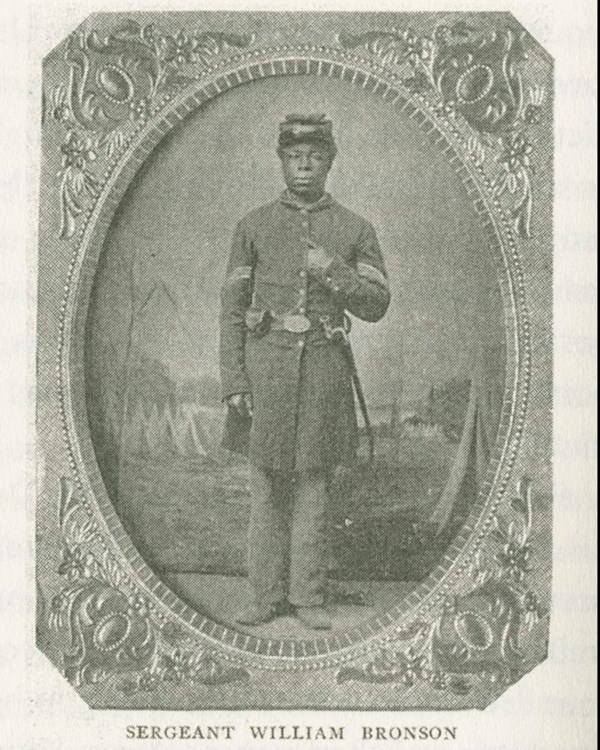Last updated: April 12, 2024
Person
William Bronson

The Outlook
Who was the first? This is a question that we ask of almost everything. We all want to know who the ground breakers were. During the Civil War, around 180,000 Black men joined the United States Army, mostly into regiments of the United States Colored Troops. But who was the first?
It’s possible that the first was William Bronson. Bronson was born in the 1830s on St. Helena Island, although there is some evidence he may have been older than that. He was enslaved by Sarah Perry as a carpenter on the island. Around 1852 or 1853 he married a woman named Tamar. Like many in region, he was liberated by the arrival of US military forces on the Sea Islands in the aftermath of the Battle of Port Royal.
By early May of 1862 he had made his way to Hilton Head and was among the earliest recruits into David Hunter’s regiment that became the foundation of the 1st South Carolina Volunteers. There were many people joining the unit around this time, and it’s impossible to know for certain who was the first to take the oath of enlistment. However, on the first roster Bronson’s name appears listed first, after that point Bronson was known to refer to himself with the moniker “Number One, African Foundations.”
Bronson served as a sergeant in the 1st South Carolina Volunteers (later redesignated the 33rd United States Colored Troops) for the duration of the war. During the war, Colonel Thomas Wentworth Higginson noted that Bronson was the best recruiter for the regiment. Many of the men who joined the 1st South Carolina may have done so at Bronson’s encouragement. However, as the war progressed, Bronson began to battle illness, first kidney disease, and then finally dying on July 7, 1865 of diarrhea. He was buried on St. Helena Island briefly, before being re-interred at Beaufort National Cemetery as part of the Federal Reburial Program.
Whether or not he was the first to enlist or not is not clear. Many of the men who joined Hunter’s Regiment in early May of 1862 might have equal claim as Bronson. So Bronson may be a symbol of the first of the first. However, some of the unit’s leaders considered Bronson to be the first to enlist – most notably Charles Trowbridge. Trowbridge later wrote “I go as often as circumstances permit and drop a rose on the grave...I live over again the scenes of my army life...I shed a tear...I love to linger...in the National Cemetery at Beaufort, where sleeps the dust of Sergeant William Bronson...I look out on the magnificent structure that has been builded [sic] on the foundation he laid.”
A special thanks to Wyatt Erchak, PhD Candidate at Carnegie Mellon University, whose forthcoming dissertation, "Private Wrongs: A Hidden History of the American Civil War's First Black Regiment” explores the early history of the 1st South Carolina Volunteers.
Charles Trowbridge’s account comes from “Nineteenth Century Freedom Fighters: The 1st South Carolina Volunteers” by Bennie J McRae, Curtis M. Miller, Cheryl Trowbridge-Miller
